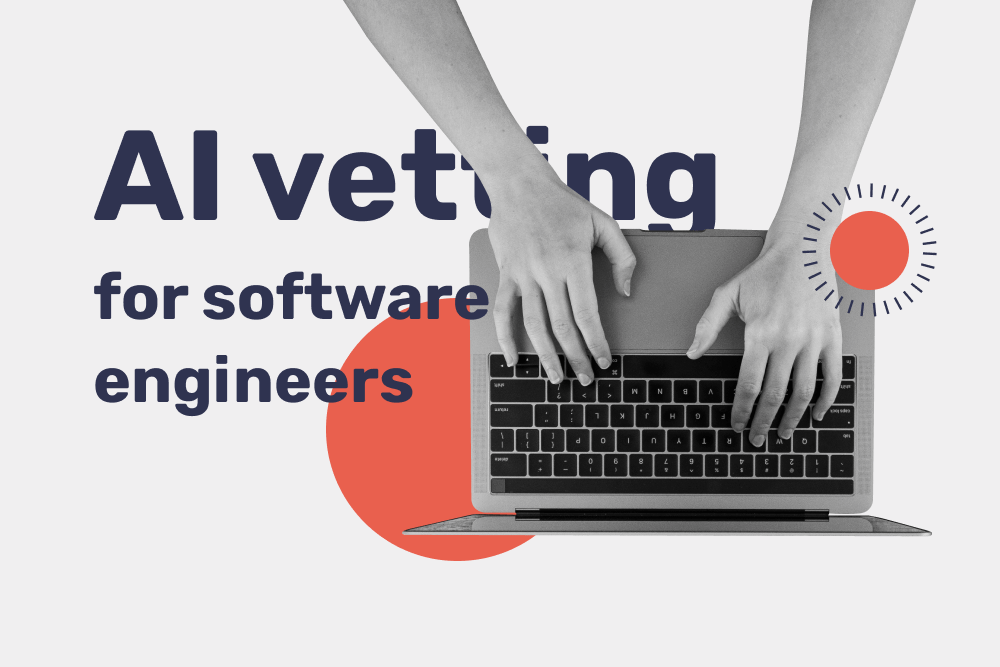There are really three main remote work models you need to consider — all-remote, hybrid, and office-centric. We’ll go over the definitions, pros, and cons, and flavors of these three models in detail to help you identify what model your company uses and if it makes sense to switch.
There’s also a fourth model, the Bridge model, where you build out a team of talented engineers outside the US according to your requirements — skills, timezone, salaries, etc. Bridge is not about outsourcing. Instead, you hire the engineers you want without intermediaries. A strategic advantage that can help you fill your talent gap in days and weeks instead of months.
OK, let’s get started! First, why does the choice of remote work model matter?
Why Remote Work Models Matter
Opinions wildly vary on going back to the office, with companies like Morgan Stanley saying outright that employees have to switch from pajamas to office attire by September 2021. You could say this is authoritarian, or unfair, or what have you. However, there’s an important additional element to the story here — the stipulation that Morgan Stanley employees must be vaccinated before they’re allowed back to the office. So you can say that working in the office is unnecessary, but you can’t say Morgan Stanley is endangering its employees in any way.
Other companies, like Google, are giving employees more flexibility by offering the option of working from home a few days a week. From what Sundar Pichai, Google CEO, tweeted, we can infer that Google employees were asked what they preferred, and the choice was made to offer flexibility.
The future of work at Google is flexibility. The majority of our employees still want to be on campus some of the time yet many would also enjoy the flexibility of working from home a couple days a week…
— Sundar Pichai (@sundarpichai) May 6, 2021
Obviously, no one can tell you how to run your business, but it’s our feeling that whether you choose to consider your employees’ opinions or not, you should at least “test their temperature” (unintended 2020 pun) about remote work.
So, tying this all together, why do remote work models matter? First, your choice will impact your business, either positively or negatively. Also, there’s no rule about mixing and matching flavors of remote/hybrid/office work. You do what’s best for your business. Period.
The 3 Main Remote Work Models
There’s no right or wrong remote work model. The important thing is that you understand the differences between the models and the pros and cons of each.
With that said, it’s not easy to switch from an in-office environment to a full-time, all-remote workplace. It’s true that most of us had to do it because of quarantine restrictions, but many companies have either migrated back to the office or have adapted a hybrid remote work model.
Let’s look at them in more detail.
All-remote
All-remote means your company has no office at all or uses coworking spaces instead of offices. This is different from what we experienced during COVID, where companies shut their office doors, expecting to go back at some point.
Going fully remote is a huge step and will likely require you to overhaul your documentation, business processes, company culture/values, and much more. And one of the best examples of an all-remote company is GitLab. And not only because they’re a unicorn company that hires around the world irrespective of location, but because they’re transparent about how they’ve been able to find success working remotely.
Check out GitLab’s Remote Playbook, Guide, Tips, and more here.
Also, make sure to watch this roundtable discussion with representatives from GitLab, ARM, and ISG Research to learn more about what people find challenging and exciting about remote work.
Pros
- Save money on office space and office-related costs
- Save time on commuting
- Hire talent globally
- Easier to scale your organization
- Ability to work asynchronously
- Protection against unforeseen circumstances (like COVID)
Cons
- Difficult to onboard employees
- Hiring globally may involve compliance issues (taxes, laws, etc.)
- Challenging to build and sustain a culture in a remote setting
- Mental health issues associated with spending time alone
- Trouble finding a proper work-life balance
- Time zone differences (especially for meetings)
Hybrid
Hybrid is more complicated because there are many flavors of hybrid. For example, there’s hybrid remote-office work where organizations give employees the full freedom of choosing when they work remotely and when they work in the office. Other types of hybrid work include setting limits on how many days employees work from home, asking employees to schedule work from home days, and offering a list of options to choose from (purely remote, in-office, or a hybrid mix).
Here are the main hybrid models we’ve identified:
- Office-centric — 3+ days a week in the office
- Remote-centric — 3+ days at home or a coworking space
- Flexible hybrid — employees have the flexibility of choosing where they work
Watch this Cisco Webex special event on Hybrid Work which includes insights from Cisco, IBM, and McLaren thought leaders as well as Arianna Huffington.
Interestingly, in an interview for Y Combinator, the CEO of GitLab described how in the early days, GitLab tried working in-office. What happened was that people naturally migrated to working from home instead, so the remote culture of GitLab was never intended as such but began when management and employees were on the same page about work results and values.
HubSpot is an excellent example of a company offering three options — office, flexible and WFH. Office implies that employees come into the office 3+ days a week. They have a dedicated desk and workspace. Flexible is when employees prefer to come in 2 or fewer days and are offered a temporary desk. WFH is self-explanatory, and HubSpot covers the costs of setting up your WFH workspace.
Pros
- More flexibility for people who prefer working in offices full or part-time
- Lower office costs (depending on the hybrid model)
- Allows organizations to hire outside the local talent pool
Cons
- An imbalance of career opportunities may arise
- Access to benefits and perks may be limited for hybrid/remote employees
- A feeling of detachment from the in-office team
Bridge
The Bridge remote work model is something you may not have encountered previously. Bridge takes a lot of the heavy lifting off of your recruiting team and compliance department. Let’s say you choose a hybrid or all-remote model and want to look for talent outside the US. Where do you start, and how do you become compliant with local laws? That’s where Bridge comes in. We partner with recruitment agencies in Ukraine, Mexico, and Argentina to source talent from a broad pool of talent.
Once we give you a shortlist of candidates, you take the reins with hiring who you want and onboarding them into your team as full team members and not outsourced workers. In addition, the platform we provide makes it easy to manage your remote team and even procure any equipment necessary to furnish their workspace.
Pros
- Quickly scale your engineering team
- Find the best talent abroad
- Manage your remote team in an all-in-one platform
- Easily become compliant
- Use employer-of-record services if necessary
Cons
- The same challenges associated with all-remote, except for the compliance and recruiting problems
Takeaways on Remote Work Models
2020 taught us a lot about what actually matters at work. It showed us that we have to be more empathetic and caring for others, and it also pointed out that the value of in-office employees isn’t always measured in results or particular metrics.
Now that we’re slowly recovering and have the option of returning to offices, many companies are opting to be more flexible with remote work models. And it’s not only limited to Fortune companies with big budgets, startups and SMBs are also taking remote/hybrid approaches.
We created Bridge to allow companies that want to expand and find the best candidates for the job even if they’re outside the US. Read more about how Bridge works by following the link below.



